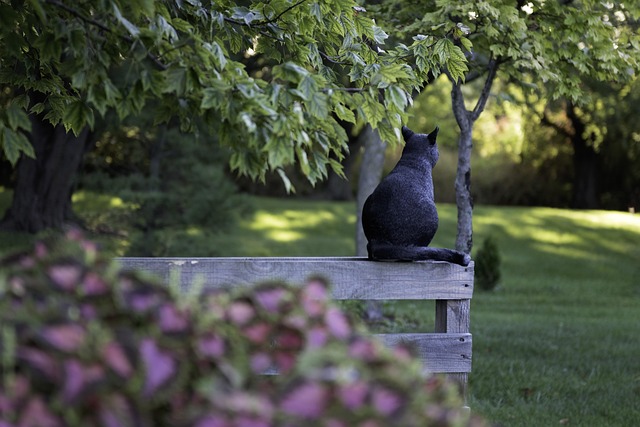New Bedford, MA, boasts a rich architectural landscape where ornamental fencing styles tell tales of its historical evolution. From classic designs reflecting traditional and Victorian aesthetics to modern interpretations infused with minimalist and industrial vibes, this city showcases a diverse array of fence styles. This article delves into New Bedford’s fencing history, explores popular choices in both residential and commercial settings, and highlights the artistic integrations that make these structures stand out as unique architectural elements.
- Exploring New Bedford's Fencings: A Historical Overview
- Classic Styles: From Traditional to Victorian Elegance
- Modern Designs: Minimalist and Industrial Influences
- Architectural Integrations: Fences as Artistic Elements
- Local Preferences: Residential and Commercial Choices
Exploring New Bedford's Fencings: A Historical Overview
New Bedford, MA, boasts a rich historical landscape where ornamental fencing styles reflect the town’s diverse cultural influences and architectural heritage. From the quaint Victorian-era homes with intricate ironwork to the more modern residential areas featuring clean lines and contemporary designs, the city showcases an evolving fencings scene. Historically, fences served both functional and aesthetic purposes, reflecting the era’s artistic trends and the community’s pride.
As time passed, New Bedford’s fencing styles have transformed, influenced by popular architectural movements. The early 20th-century saw the popularity of art deco and geometric patterns, while more recent developments embrace sustainability with eco-friendly materials and designs blending seamlessly into the natural surroundings. Exploring these variations offers a glimpse into the town’s character and the ever-changing tastes of its residents.
Classic Styles: From Traditional to Victorian Elegance
New Bedford’s architectural landscape is adorned with various ornamental fencing styles, many of which have stood the test of time, reflecting the area’s rich history and diverse tastes. Among the classic styles, traditional fences often feature straight lines and simple designs, emphasizing functionality while still adding a touch of elegance to properties. These fences are typically constructed from materials like wood or metal, offering durability and a classic aesthetic.
Victorian-inspired fencing, on the other hand, showcases intricate patterns and elaborate detailing that date back to the 19th century. Fences in this style often incorporate curvilinear shapes, decorative scrollwork, and elaborate latticework, creating a sense of whimsy and sophistication. Cast iron and wrought iron were commonly used during this period, allowing for intricate designs that have become synonymous with Victorian architecture. These classic styles continue to captivate residents and visitors alike, contributing to the charming and distinctive character of New Bedford.
Modern Designs: Minimalist and Industrial Influences
In recent years, New Bedford has witnessed a surge in modern fencing styles, reflecting contemporary design trends. Among these, minimalist and industrial influences stand out, characterized by clean lines, open spaces, and unadorned aesthetics. Minimalist fences often feature sleek, rectangular panels with minimal ornamentation, allowing natural landscapes to take center stage. This approach not only emphasizes the beauty of surrounding greenery but also creates a sense of openness and modernity.
Industrial influences bring a different dimension to ornamental fencing, incorporating elements like metal pipes, cable wiring, and raw materials. These designs often showcase an urban, industrial look, with fences featuring geometric patterns and exposed metalwork. This style is particularly appealing for areas seeking to blend seamlessly with urban environments, offering both functionality and a contemporary visual appeal.
Architectural Integrations: Fences as Artistic Elements
In New Bedford, MA, ornamental fencing styles transcend their functional purpose, transforming into artistic elements that complement and enhance architectural landscapes. Beyond providing boundary definitions, these fences become integral parts of a property’s overall aesthetic, mirroring the unique character of surrounding structures. Crafted with intricate designs, from classic Victorian motifs to modern minimalist lines, they serve as a canvas for creativity, showcasing the craftsmanship and style preferences of their owners.
Integrating fences into architectural design requires careful consideration of materials, patterns, and colors that harmonize or contrast with existing buildings. Metal fences, for instance, can add a touch of industrial chic, while wooden ones offer warmth and rustic charm. In New Bedford, local architects and designers often collaborate to create custom fencing solutions that not only secure properties but also contribute to the visual appeal of entire neighborhoods.
Local Preferences: Residential and Commercial Choices
In New Bedford, MA, ornamental fencing styles reflect both local aesthetics and practical considerations. Among residential properties, there’s a clear preference for fences that blend seamlessly with the natural landscape. Wrought iron and wood-focused designs are particularly popular due to their classic charm and ability to withstand local weather conditions. These choices often incorporate intricate patterns and detailed carvings, enhancing the curb appeal of homes while maintaining privacy.
Commercial spaces, on the other hand, tend towards a mix of functionality and security. Metal fences with modern, sleek lines are favored for their durability and low maintenance requirements. Additionally, electric fence options are increasingly popular for businesses seeking enhanced security measures without compromising aesthetics. Local regulations also play a significant role in shaping these preferences, ensuring that any ornamental fencing installed adheres to safety and structural standards.
